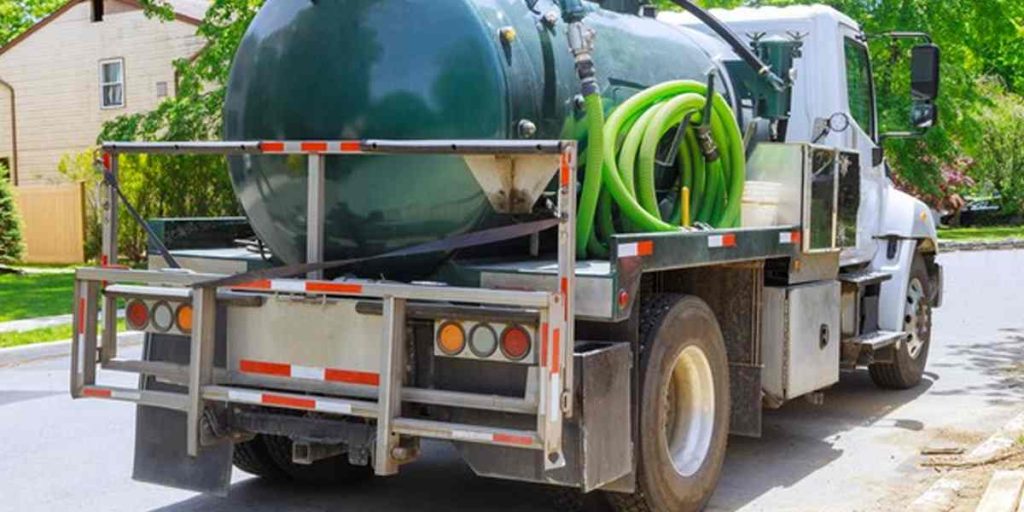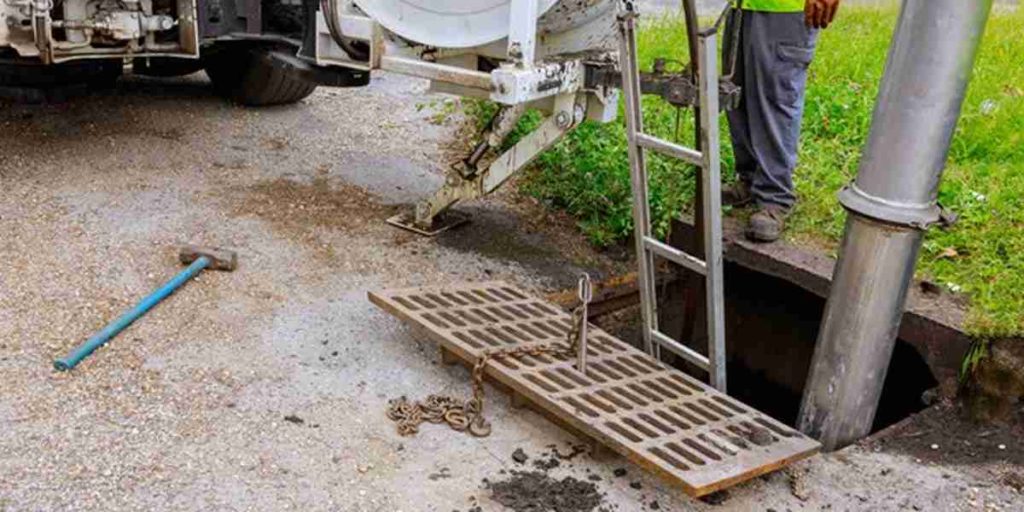Cleaning the sewer is the best preventive maintenance task to ensure the proper functioning of the sewer network.
Sewage systems provide an essential service in any city or municipality, which is why they constitute a public service. It is essential to have a maintenance plan that keeps the sewer network in good condition. In this way, we will achieve its correct operation, avoiding collapses and blockages that can cause an overflow of wastewater or rain.
Usually the vehicle used in these sewage cleaning works is the tanker truck, which has a separate tank in two tanks: one for clean water and the other for sludge and wastewater.
In this article we are going to explain everything you need to know about sewer networks and the importance of an adequate Preventive Maintenance Plan and sewer cleaning.
BENEFITS OF CLEANING SEWER NETWORKS
SAVINGS IN COSTS, PESTS AND ENVIRONMENTAL IMPACT
There are many benefits that we obtain thanks to a good preventive maintenance and cleaning plan for the sewer system:

- Reduce Costs: If we keep the sewer system in good condition, we will avoid overflows or collapses that can cause the pipes to break. A breakage of any of the pipes, in addition to having a replacement cost, can cause other material damage to nearby buildings and public roads. This implies an even higher repair cost.
- Avoid power outages in the network: When a leak or break occurs in the system, it is necessary to cut off the water supply, to avoid collapse. These cuts are a nuisance for the residents of the area affected by the cut in supply.
- Prevents hygiene problems and bad odour: By keeping the network in good condition, the possibility of sewage overflowing is minimized, thus preventing problems related to health and hygiene. Bad odors caused by the accumulation of waste that are not evacuated correctly through the network are also avoided.
- Prevents proliferation of insects and rodents: Preventive cleaning of sewage pipes and collectors allows controlling and reducing the proliferation of rats and other insects. With this we avoid the problems derived from this type of pests, mainly related to health and hygiene.
- Reduces the need for emergency services: When we keep the entire system in good condition, we avoid emergency collapses, such as those that can occur when heavy rains fall. In this way, the need to request emergency services is reduced, which in addition to entailing a higher cost, take time to solve the problem, so damage inevitably occurs.
THE SEWER NETWORK: WHAT IS IT AND HOW DOES IT WORK?
HYDRAULIC SYSTEM FOR CONVEYING WASTEWATER AND RIVER WATER
What is a Sewer Network?
A sewerage network is a hydraulic structure that allows the collection and conduction of residual and/or fluvial waters (those that come from the rain) until their final disposal (discharged into the sea, rivers or reused for irrigation and other applications).
The sewage network is made up of a series of pipes that are connected to each other through wells, connections, manholes and collectors. In this way, the system that allows the water to be carried to its ultimate destination is formed.
Along the entire route of the network, there are inspection wells, which allow access to the sewer to carry out cleaning, maintenance and repair work.
How does it work?
The operation of the sewer network is based on gravity. Thanks to the effect of gravity, the water circulates through the network to its final destination. For this, it is important that the pipes have the correct slope.
Sometimes, in areas where it is not possible to achieve an adequate slope in the pipes and sewerage channels, it is necessary to implement other systems that guarantee a correct flow of water. This is the case of pumping stations and discharge lines, which allow the water to be raised above the level of the pipe through which it is flowing, thereby ensuring that it flows correctly to the next collector.
WHO IS RESPONSIBLE FOR SEWER CLEANOUT?
PUBLIC AND PRIVATE SEWAGE NETWORKS
The most common thing is that the municipalities are in charge of the maintenance and cleaning of the sewage system, since practically the entire network is public.
But there are stretches of sewers that are private. This is the case of the conduits that connect the network of neighborhood communities, chalet-type homes, etc., to the section of the public sewerage network. The cleaning of these sections is the responsibility of the property owners. Many times, this aspect is neglected until a problem occurs, and that is when the emergency room is called.
WHAT PROBLEMS CAN THERE BE IN THE SEWER NETWORK?
JAMS, BAD SMELLS, LEAKS, FLOODS, PESTS AND CONTAMINATION
When the sewage system is working properly, wastewater and river water are evacuated correctly and without causing incidents.
But when the sewer is not properly maintained and cleaned, it increases the possibility of causing health problems and a serious environmental impact.

The main problems that can be caused in the sewer are:
- Traffic Jams: Domestic waste that is thrown down the pipes can cause serious obstructions in the channels. This is the case of wet wipes , compresses, plastics, oil, and other waste.
- Bad Smells: The accumulation along the sewage network of traces of paint, oil and food waste that we throw down the pipes, ends up causing a problem of bad odors. That is why it is always advisable to carry out proper waste management at home, and go to a clean point or to the waste containers to do a correct recycling.
- Leaks: When a blockage occurs at some point in the sewer network, it can cause a leak that causes damage to nearby material goods , such as urban furniture, and even structural damage to premises, ground floors and basements.
- Floods: In cases of heavy rain , a poorly cleaned sewer network is more likely to overflow and cause flooding. For this reason, in places where there is a greater incidence of rain, special attention is paid to keeping the system in good condition.
- Pests: Wastewater and organic debris flowing through the system can end up accumulating in different sections. This causes a higher incidence of insect pests , such as cockroaches, mosquitoes, and flies; and from rodents, such as rats and mice. It should not be forgotten that these pests can transmit diseases and constitute a public health problem. That is why it is vital to carry out pest control correctly, through a network cleaning plan and by going to a pest control service if necessary.
- Environmental Pollution: Wastewater carries a lot of waste that can be polluting. This is a serious problem for the environment, both for flora and fauna, which can be affected by this contamination. That is why it is important to carry out an adequate cleaning of the sewage system, and a correct management of the extracted waste.
HOW TO PREVENT BLOCKAGES IN THE SEWER NETWORK?
PREVENTION OF BLOCKAGES, LEAKS, FLOODS AND ENVIRONMENTAL IMPACT
Prevention is the best recommendation to prevent sewer problems from causing further damage. In this sense, there are 3 ways of working on which it is important to influence to prevent problems in the sewage system:
- Sewer Cleaning: A correct preventive maintenance plan includes periodic cleaning of the sewer, according to the needs of the network and the place. In this way, we will anticipate problems, and we will keep the entire system in optimal conditions.
- Social Awareness: Society must be aware that the pipes are not the rubbish bin to which any remains or waste can be thrown. We must be very careful and manage resources efficiently. That is why we must become aware of the importance of separating waste properly and then taking it to the corresponding recycling point.
- Building and construction of houses: Builders must make a correct separation of wastewater, which must be connected directly to the public sewage system; and of fluvial waters, which must be evacuated by other systems. The objective is to prevent the collapse of the sewage system, especially when heavy rains occur.
HOW TO CLEANOUT A SEWER?
SEWER CLEANING TECHNIQUES AND EQUIPMENT
As we have been commenting throughout the entire article, the best way to avoid problems of blockages, leaks, floods or bad odors is by carrying out a correct preventive maintenance and cleaning plan for the sewer system.

A correct cleaning of the sewage system must guarantee a cleanliness of all its elements:
- Pipelines
- Sinks
- Connections, collectors, wells and manholes
Cleaning by drag or extraction
This system is the most common in areas where there is a greater slope, since it is there where more solid waste accumulates. With this method, the channels and gratings of the sewer drains are cleaned, thus allowing the water to flow correctly.
Hydrodynamic cleaning sewer networks
For this type of cleaning, high pressure equipment is used , which injects water through the pipes. The vehicles and tanks that carry out this type of work are equipped with vacuum pumps that separate water and solid waste. This separation is carried out automatically inside the tank truck.
Pneumatic extraction cleaning
With this method, the aspiration and extraction of the solid residues that block the passage of water is carried out. Subsequently, this waste is transferred to its recycling point safely and without causing damage to the environment. This type of cleaning is carried out by specially equipped tank vehicles . This is the case of sewage trucks, which are designed and manufactured especially for this type of work that requires equipment with high performance and power.She has pursued her studies in The United States, where she has graduated in Business and Economics and is currently finishing her Master studies in International Economics and Finance. Miss. Amputee is fluent in three languages: English, Spanish and Russian and has elementary knowledge of French and Italian. She love exploring how Collaborative Research Group can become the best tool to achieve the (necessary) educational change. .
